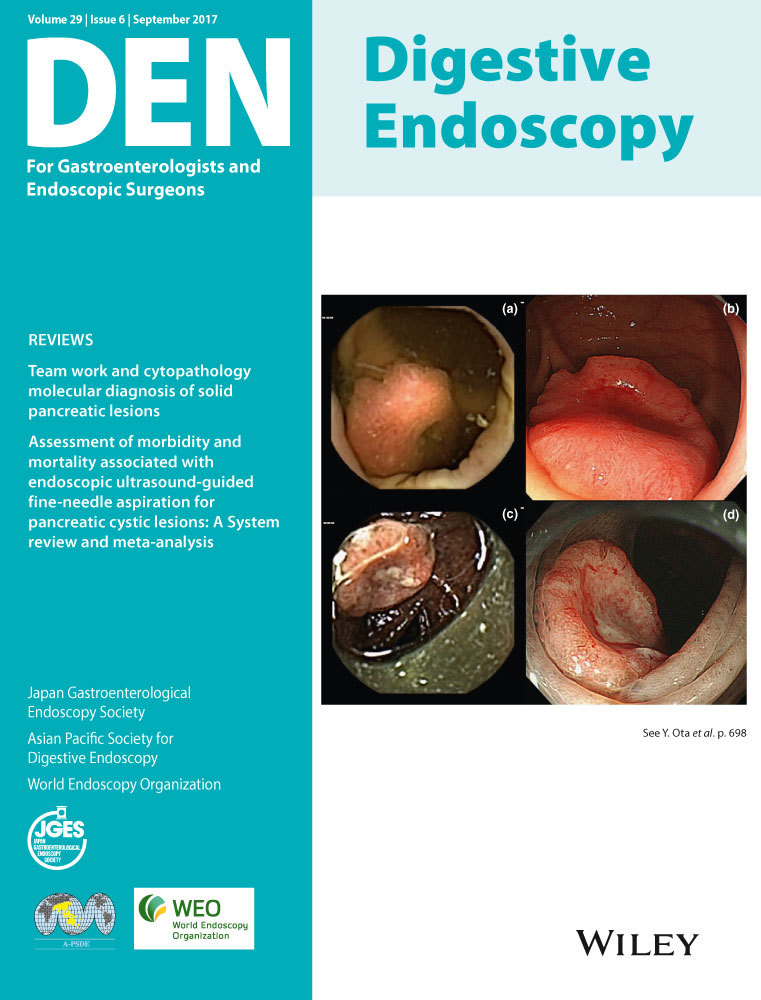Evaluation of the safety of endoscopic radiofrequency ablation for malignant biliary stricture using a digital peroral cholangioscope (with videos)
Abstract
Background and Aim
The clinical impact of catheter-based radiofrequency ablation (RFA) under endoscopic retrograde cholangiopancreatography (ERCP) guidance has recently been reported; however, severe adverse events have also been noted. If tumor is not present in the biliary tract, severe adverse events such as perforation or bleeding as a result of vessel injury around the biliary tract may occur. In addition, the effectiveness of RFA may not be sufficient based solely on radiographic guidance. The aim of the present study was to evaluate the actual feasibility of intraductal RFA by peroral cholangioscope (POCS) evaluation before/after RFA.
Methods
In this retrospective study carried out between July and September 2016, consecutive patients who underwent RFA for malignant biliary stricture and POCS evaluation before/after RFA were enrolled. Primary endpoint of this study was technical feasibility of RFA, which was evaluated by POCS. Secondary endpoints were rates and types of adverse event.
Results
A total of 12 consecutive patients were retrospectively enrolled in this study. Stent placement using uncovered metal stents had been previously done in six patients before RFA. Tumor was seen in the biliary tract in all patients. RFA was technically successful in all patients, and clinical success was confirmed in all patients by POCS imaging. Adverse events were seen in only one patient. Median stent patency was 154 days.
Conclusions
RFA for malignant biliary stricture may be safe. To confirm the feasibility and efficacy of RFA, additional cases, prospective studies, and a comparison study between with and without endobiliary RFA are needed.




